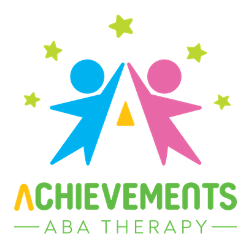A very common symptom of Autism Spectrum Disorder is self-stimulatory behavior.
Self-stimulatory behavior is best defined as a behavior that is repetitive and stereotyped and it does not appear to serve any other function aside from for sensory stimulation.
There are three types of self-stimulatory behaviors:
- Body movements.
This includes the self-stimulatory behavior of rocking, hand-flapping, twirling.
2. Self-stimulation using objects for the purpose of sensory input.
This involves the self-stimulatory behavior twirling string between fingertips, turning wheels of a car, spinning objects, etc. When a child with ASD is interacting with a toy, it may look like he is playing. When you look further you will notice that he/she is not playing with the toy with it’s intended fashion. An example can be when a child is spinning the wheels of a car instead of driving it.
3. Rituals and obsessions.
There is a broad range of activities that fall into this categorized. Examples include lining up objects, creating rules and instisting that everyone follow these rules. Another example is verbal perseveration which mean discussing the same topic over and over again.
You may be reading this and thinking, I sometimes do the activities above when I am bored. Am I autistic? The answer is many people will engage in some form of stimulation when bored. This can involve tapping your foot, playing with your pencil or daydreaming. The difference is that this is not your only or most desired means of gratification. Most people enjoy recreational activities such as sports or watching a movie more than chewing their pencil.
What is the purpose of self-stimulatory behavior?
- Self-stimulation.
Just as its name implies. Many children with ASD do not find the environment around them interesting.
- Reduce Frustration or stress.
Sometimes a child will engage in self-stimulatory behavior as a way to self-soothe. This should serve as a signal for their aba therapist or parent to reduce the demand or provide assistance by removing the source of frustrations.
Over time, self-stimulatory behaviors become more intense. For this reason, it can become harder to suppress. When a child is younger and is receiving early intervention care, eliminating the behavior may be a realistic goal but with older children reduction is usually the objective. Both early intervention and older children receiving ABA therapy can benefit from shaping the self-stimulatory behavior into a more age-typical behavior.



















